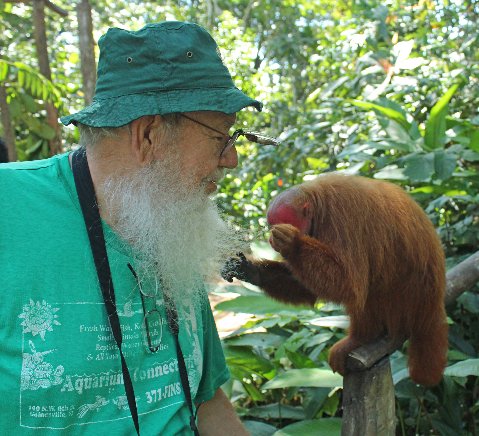It was back in the late 50s when, motoring down Route 27 in Hialeah, I heard a coarse, rattling call that I didn't recognize.
The rattle seemed to come from various areas along the shores of a roadside canal. Bird? Unlikely. It sounded more like an amphibian call. And after I pulled over and accessed the canal, an amphibian is exactly what it proved to be -- a cane (giant or marine) toad,
Bufo (Chaunus ) marinus.

Today, after 60 years of introduction, the cane toad is rather generally distributed over most of Florida's southern peninsula. It is native to the southern Rio Grande Valley of Texas, and from there ranges naturally southward through much of Latin America.
In a failed attempt to control the sugarcane beetle, the cane toad has been introduced to and established in Australia. Although of admirable intent, the introduced toads failed at the intended objective and are now considered a totally unwanted, invasive species.
The very visible parotoid glands of this toad are comparatively immense and produce a virulent mixture of toxins. Despite this, it is often offered in the pet trade and makes a rather complacent, hardy captive. Just be sure to wash your hands well after handling the creature.
More photos under the jump...
Cane toad, male chorusing, Miami, FL:

Cane toad, Rio Grande City, TX:

 Author, photographer, and columnist Richard Bartlett is one of the most prolific writers on herpetological subjects in the 20th century. With hundreds of books and articles to their credit, Richard and his wife Pat have spent over four decades documenting reptiles both in the field and in captivity. For a list of their current titles, please visit their page in our bookstore. Author, photographer, and columnist Richard Bartlett is one of the most prolific writers on herpetological subjects in the 20th century. With hundreds of books and articles to their credit, Richard and his wife Pat have spent over four decades documenting reptiles both in the field and in captivity. For a list of their current titles, please visit their page in our bookstore. |




To prevent automated Bots from commentspamming, please enter the string you see in the image below in the appropriate input box. Your comment will only be submitted if the strings match. Please ensure that your browser supports and accepts cookies, or your comment cannot be verified correctly.